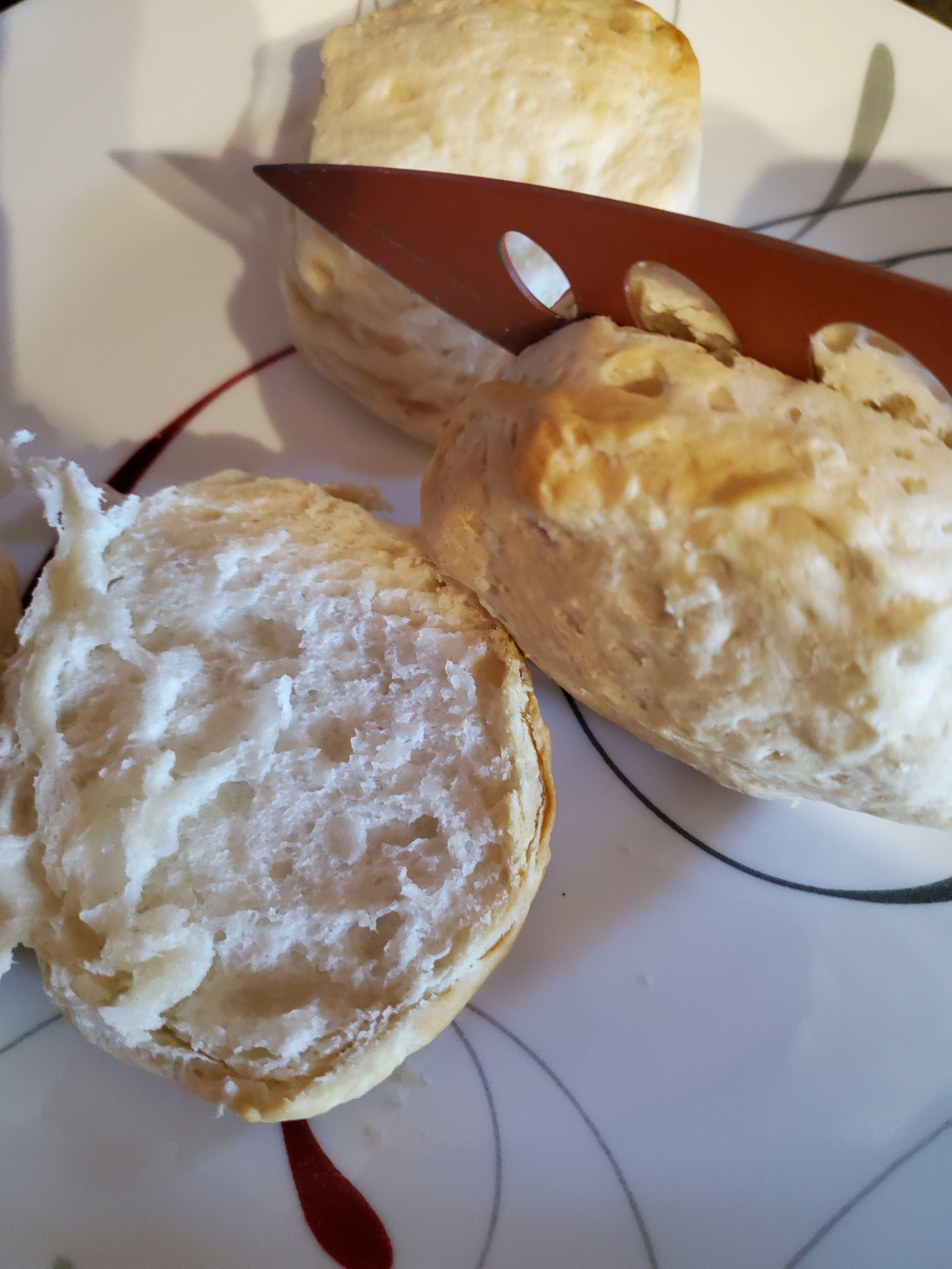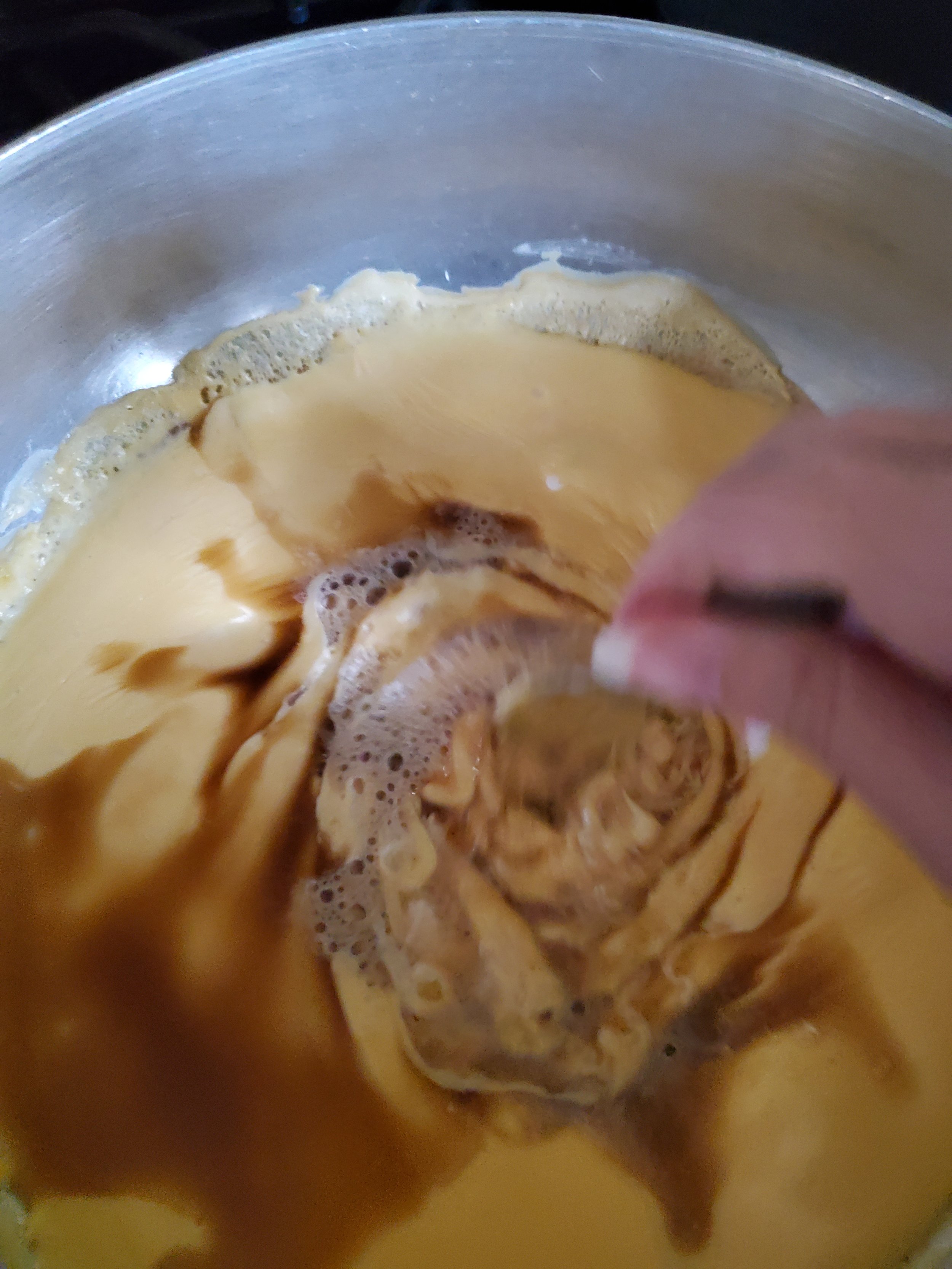Spooky Biscuits for All Day Long
Sometimes the best thing you can do for yourself is make things easier on future you. This is especially true for a weekend holiday.
Here's a fast breakfast, lunch or dinner idea to get some food in the bellies of your trick or treaters before they wander off, or as they come back down from the sugar high... Or maybe into your stomach before the heathen horde comes knocking.
Let's make some quick and easy monster biscuits.
Ingredients:
1 can biscuits or 8 frozen biscuits
4 oz brick mozzarella cheese
Lunch meat of choice, or pepperoni
1 can whole pitted black olives
1 jar strawberry or raspberry jam or jelly
White chocolate chips, sliced almonds, candy eyes, etc.
We know you're looking at this ingredient list and questioning our sanity. Don't worry. It's not all going together on one biscuit.
Tools:
Baking sheet, foil, oven mitt, cutting board, vegetable peeler, knife, fork, spoon, plate, spatula
Line your baking sheet with a layer of foil, because anything that makes your life easier today is worth it.
Preheat the oven according to the directions on your package of biscuits.
We used the Pillsbury brand southern homestyle biscuits in a can (because we already had them on hand and didn't want to make an extra trip to the store) and we found them to work well. We've also previously used the Great Value brand frozen buttermilk biscuits, but in our experience, they are prone to scorching on the bottom. If you use them, keep a close eye on them while they bake up so you avoid that problem.
Place your biscuits on the lined baking sheet - have their edges touching if you want them tall and fluffy, or give them room to expand if you would prefer them a little thinner - and pop them into the oven. Set your timer for HALF of what the directions say. Trust us here.
While your biscuits bake, pop open that can of olives. Drain them and give them a quick rinse so they won't transfer their color as easily when you assemble dinner. We're going to do this in reverse order for the meals, because of the three meal ideas we're covering, the dinner takes the longest to prep.
Fish out a few olives and put them on your cutting board. Slice a thin ring out of the middle of each. Your goal here is eight little rings. Feel free to eat all your mistakes - it's the best perk of being the chef.
Once you have your olives ready, scoot them to one side of the cutting board. Consider wiping up after them if they've left you a wet spot. Place your brick of cheese long side up on the board and grab your vegetable peeler. We know you're questioning our sanity again, and it's okay. Take the peeler and shave long, thin straps off the brick of cheese until you feel you have enough to put a double layer on six of your eight biscuits.
You may have a cheese wire in a drawer somewhere that you want to use for this. We would advise you skip that urge. The goal here is the extra-thin strips and feathery edges a peeler creates. A cheese wire, even adjusted to as thin as possible, will still make a mostly clean cut. If that's what you'd prefer, go ahead, but we definitely think it looks more like a mummy bandage with the rough sides and broken looking ends.
Feathery, jagged cheese bandages.
By now you should be reaching the end of the timer you set. Pause and flip the biscuits. The directions don't say to in most cases, but if you flip them halfway through, you'll get nice, toasty tops and bottoms without either one becoming too thick or crispy. Put them back in the oven for the remaining half of the recommended time and reset your timer.
While they finish up their baking process, separate some slices from your lunch meats. It doesn't really matter what you choose to use, as long as you enjoy it. We used hard salami for ours, but it would work just as well with ham or turkey or roast beef if you have them on hand.
Once they're out of the oven, split them all evenly with a sharp knife.
Fluffy, freshly baked and sliced biscuits.
Take two and plate them like an open-faced sandwich. Spoon a generous helping of jam or jelly onto each half and spread it a bit with the back of the spoon. Congratulations, you have a smashed monster! We had candy eyes left over from another project and used those for this, but slices of almond, white chocolate chips or mini marshmallows also can serve as a reasonable approximation of monster eyes. Just use whatever you have on hand.
Frighteningly delicious breakfast monster
Take your next two biscuits. Layer your lunch meats on them and add a few strips of cheese if you'd like.Grab two whole olives. Wrap a torn slice of lunch meat around each one, leaving the open end of the olive visible. Shut your biscuits into sandwiches and tuck your wrapped olives into the side, peeking out like a pair of creepy, unblinking eyes. There's lunch, easy to just grab and run if necessary.
Lunch timer watcher
And now for dinner... take your four remaining biscuits and plate them with their soft insides up. Place a layer of lunch meat on each half, then add those olive rings you cut earlier as eyes a little above the middle. Cover it all over with a layer of cheesy bandages, being sure to let at least one eye still peek out from beneath them.
Mummy’s out for dinner!
By the time dinner comes around, these will have gone cold - so be sure to lightly toast them and get your cheese melted before enjoying your new mummy bites.
And with just a bit of time, you’ve got three fantastic meals, sure to haunt anyone. If you test them out let us know over on our Facebook page! We’d love to hear from you.
If on the other hand, you ended up here because your oven has decided to go to the grave, we might be able to help. We’d be willing to say that we’re better than Dr. Frankenstein, at least when it comes to bringing appliances back to life. Give us a call at ((214) 599-0055) or visit our contact page to get in touch.








